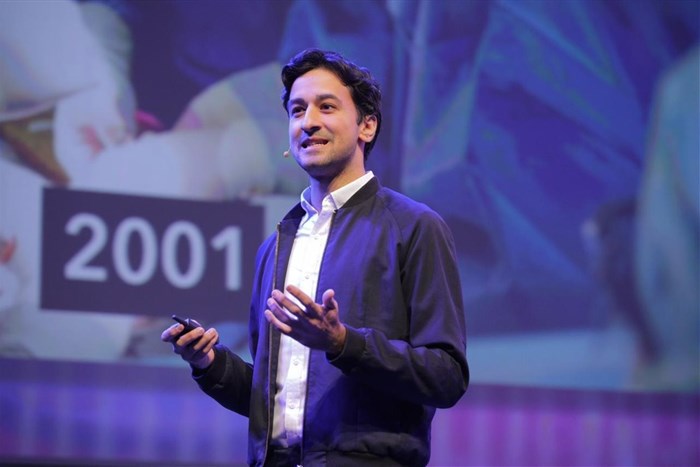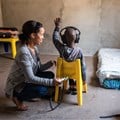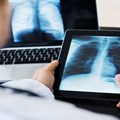
Dr Habib Frost delivering his talk at the SingularityU South Africa Summit 2019. Image supplied.
Sensors
How has surgery changed? Surgeons no longer have to rely on what they can see and sense with their own fingers. The demand for new advanced technology has led to an abundance of sensors – sensors we can use in healthcare to change the procedures we already have.
From diabetes to monitoring patient’s vital signs, biomedical patches (connected to apps) are making a massive difference when it comes to time management, pain relief and even cost. But implanting biomedical devices is not new – in 1985 the first pacemaker, which was the size of a hockey puck and had to be charged every three days, was invented. Today a pacemaker is the size of a paperclip.
GSK is working Google to develop an asthma patch implant – currently in clinical trials – to stop attacks before they happen.
Accelerated computing
Phones have machine vision – they can recognise faces. It’s not dissimilar to what doctors use to analyse CTs or MRIs. The software in our phones can also be used to load in millions of pictures in an algorithm to recognise diseases. A piece of software (called Arterys) can do a cancer diagnosis on its own in 15 seconds where a specialist physician would need 20 years of training and spend 30 minutes to one hour working towards a similar result.
Exponential technology is driving down the cost of medical devices – Butterfly iQ, for example, used exponential technologies to create a $1,999 ultrasound device, engineered on a semiconductor chip.
De Wet Swanepoel 14 Oct 2019 DNA technology
Every plant, bacteria and human being runs on DNA - four base pairs. Sequencing one person’s genome now only costs around $400. But how are these molecular structures attached to electronics? Machines can stitch together DNA – DNA sequencing devices are now so small they can fit under a smartphone, bringing the opportunity to early intervention and on-site diagnosis.
Can gene therapy cure cancer? CRISPR is gene-editing technology – it brings with it the ability to cut, copy and paste DNA. It can also be used to treat illness (like cancer) and change the DNA of healthy human beings – the world’s first gene-edited babies were born in China in November 2018.
Further into the future
Ageing is caused by the accumulation of zombie (senescent) cells – grey hair, skin changes, etc. But can removing senescent cells benefit human beings? In January 2019, Mayo Clinic did a study to remove these cells. Results to follow!
Can applied computing save your life? The answer lies in ensuring this technology benefits as many people as possible and not just a select few.











































